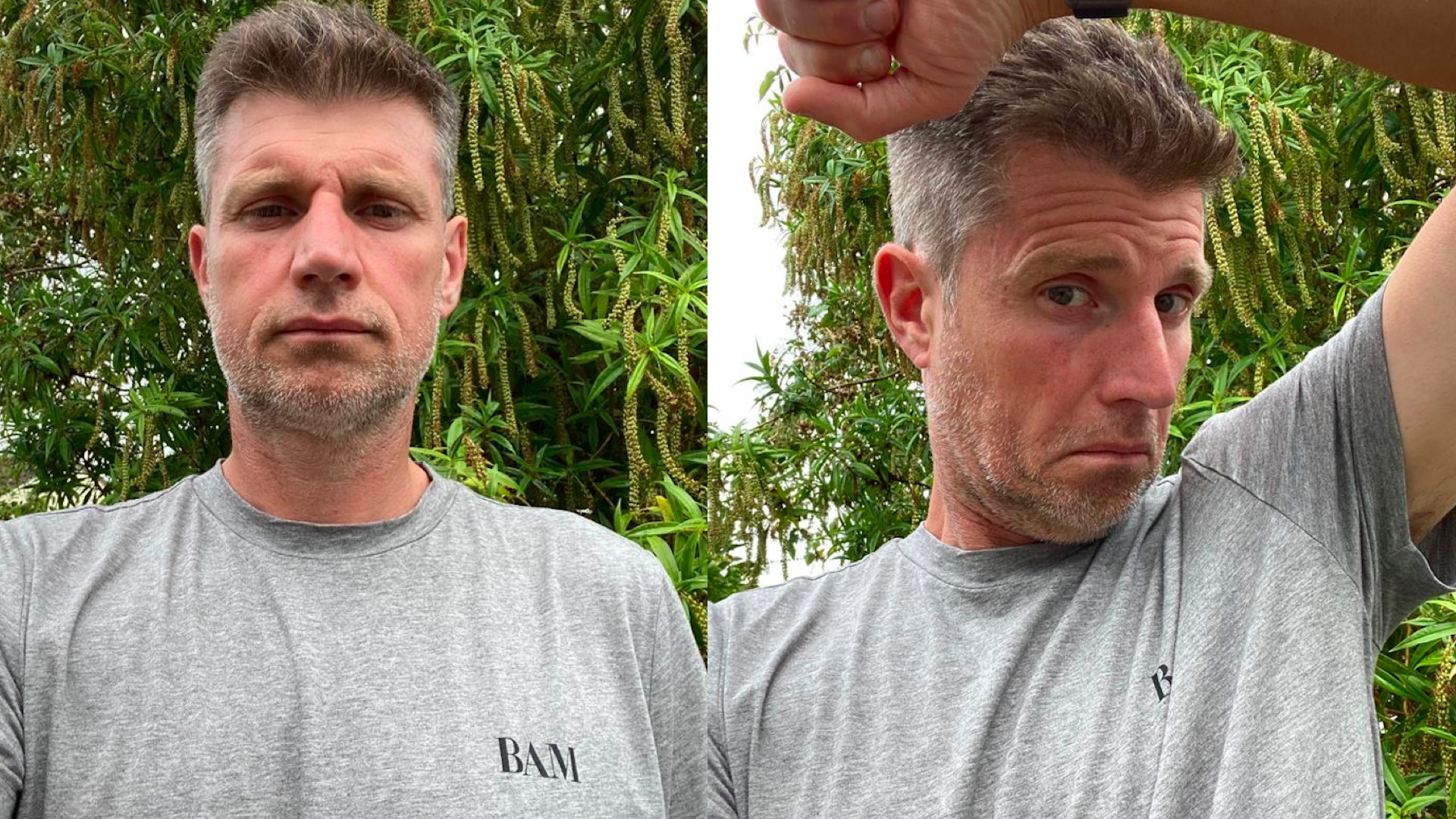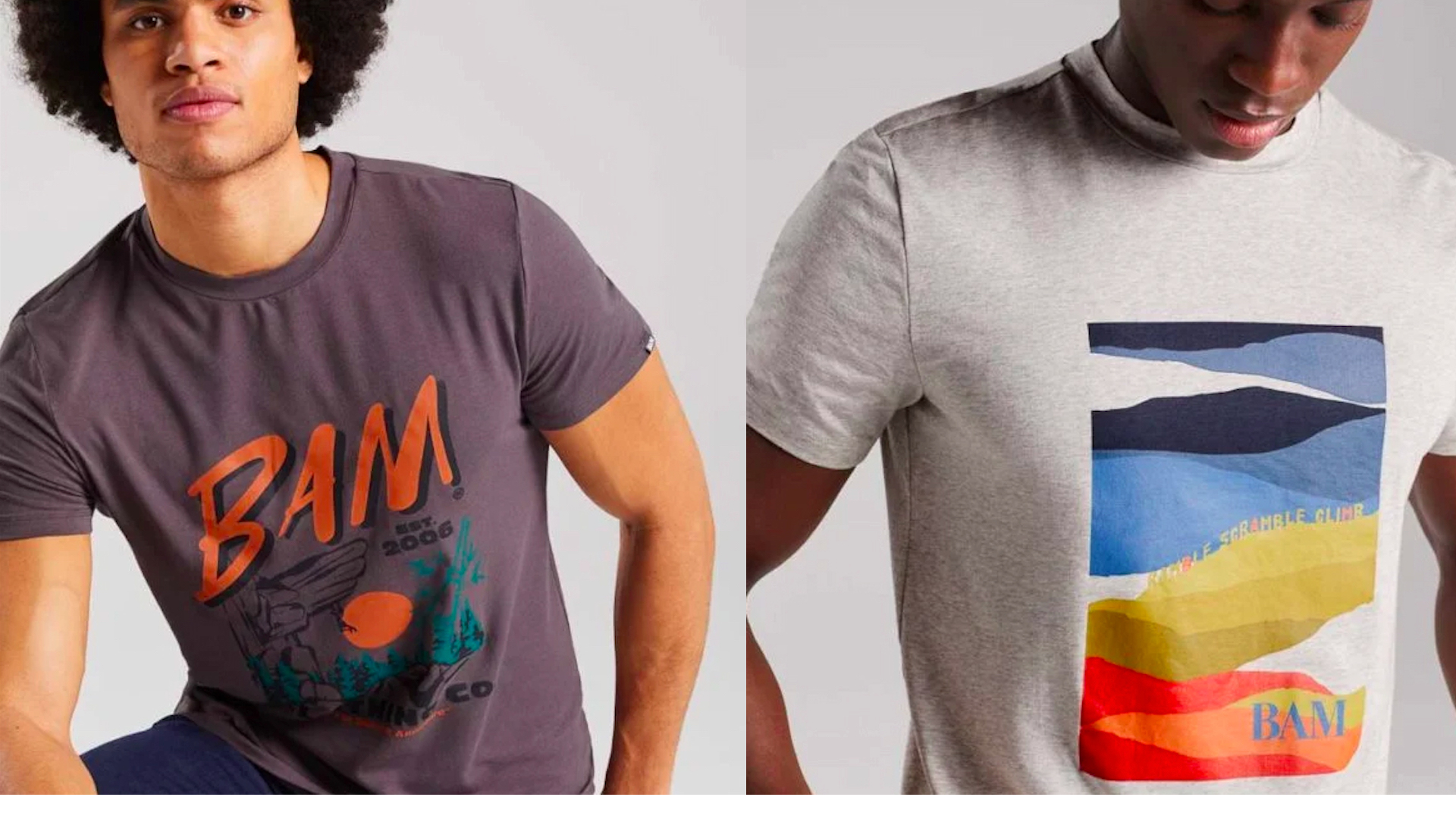Advnture Verdict
The perfect summer T-shirt for those who like to spend time being active in the outdoors, and want to cut down on their environmental impact.
Pros
- +
Doesn’t accumulate body odour
- +
Great next-to-skin comfort
- +
Lots of designs to choose from
- +
Nice price
Cons
- -
Not available (with graphics) for women
You can trust Advnture
BAM Graphic Bamboo T-shirt: first impressions
The biggest initial problem I had with testing a BAM Graphic Bamboo T-shirt was picking a design from the myriad of graphics available. Many of the designs reference outdoor pursuits such as climbing (a sport close to the heart of British brand BAM since it was started by David Gordon in 2006) and / or the environmental benefits of wearing bamboo.
These Tees are made from a dynamic mix of mostly natural material, the main ingredient of which is bamboo – a much more environmentally friendly fabric than the synthetics used to make the majority of technical apparel.
Because it is grown, rather than being artificially made from raw materials sourced through the fossil-fuel consuming petrochemical industry (as poly-based garments are), bamboo is more sustainable to produce, and it biodegrades when you’ve finished with it, instead of taking millennia to degrade.
Indeed, according to BAM, compared to a garment made from synthetic materials, buying and wearing this one T-shirt saves the equivalent of 310 days of drinking water, avoids 6.7km of driving emissions and means 2.4 square metres of land has avoided being farmed with pesticides.
Bamboo clothing is an extremely breathable fabric, and creates clothes that are lightweight, feel comfortably cool next to skin, and are perfect for a plethora of outdoor pursuits, from walking to cycling and climbing. It has a UPF (Ultraviolet Protection Factor) of 50+, effectively blocking out 98% of the sun’s harmful UVA and UVB rays. (A couple of choices in our best base layer buying guide are made from bamboo, too, and a pair of BAM bamboo shorts also makes into our best trail running shorts recommendations.)
Straight out of the packet, bamboo clothing always has a pleasing look, feel and smell, and this short-sleeved top was no exception. Unsurprisingly, it was instantly luxuriously comfortable to wear.
• RRP: £29 (UK)
• Gender availability: Male
• Materials: Bamboo Viscose (68%), Organic Cotton (28%), Elastane (4%)
• Weight (male large): 160g/ 5.6oz
• Sizes: S–XXL
• Colors: Multiple, with various graphics
• Compatibility: Hiking, biking, climbing
BAM Graphic Bamboo T-shirt: in the field
I wore this T-shirt for seven days on the trot, as part of BAM’s ‘Dare to Wear’ challenge, which set out to show that it’s possible to use bamboo products (whoever they’re made by) multiple times before you need to wash it. Laundering vastly increases the carbon footprint of clothing, so the fact that bamboo naturally combats body odour smells, and doesn’t need to be washed as often as other fabrics, makes it even more environmentally friendly.
All the latest inspiration, tips and guides to help you plan your next Advnture!
Across the week I did a lot of walking, a bit of cycling, several runs and spent a lot of time pumping up SUP boards for family members in hot conditions, all while wearing the T-shirt, and by the end of the seven days people still weren’t avoiding me. You could tell it wasn’t straight out of the packet, but the T-shirt had an aroma that I would expect at the end of just one day of use if the garment had been made from cotton, and only a few hours of use if it was made from a poly fabric.
Usually, clothes start to smell when air hits the moisture (sweat) and bacteria starts to build up. With synthetic materials, moisture sits on the surface so odour-making bacteria is quickly created and the T-shirt will soon start to pong. Cotton copes a bit better, but bamboo viscose is the big BO basher.

Bamboo is three times more absorbent than organic cotton, and massively more so than any synthetic fabric. It has a fibre structure that absorbs moisture away from the skin and into the fabric really effectively, making it more difficult for air to reach, and this means bamboo garments stay fresh for longer, reducing the need for frequent washing.
The T-shirt also maintained its shape well throughout, and, of course, stayed comfortable from start to finish. Best of all, once it was washed, any trace of body odour was removed, whereas garments made with synthetic materials often hold on to sweaty smells forever.
As a technical top for summer activities, this T-shirt works really well for all the reasons above. I wouldn’t necessarily choose to wear it in cold or wet conditions, because the cotton-and-bamboo-mix material holds onto water for some time, making clothes made from them pretty heavy, which also severely compromises their ability to keep the wearer warm. But in warmer months, this really is the ideal top for everyday wear and use when you’re at the crag or on the trails – particularly when backpacking. It looks great, and you can get several days’ wear out of it.

Author of Caving, Canyoning, Coasteering…, a recently released book about all kinds of outdoor adventures around Britain, Pat has spent 20 years pursuing stories involving boots, bikes, boats, beers and bruises. En route he’s canoed Canada’s Yukon River, climbed Mont Blanc and Kilimanjaro, skied and mountain biked through the Norwegian Alps, run an ultra across the roof of Mauritius, and set short-lived records for trail-running Australia’s highest peaks and New Zealand’s Great Walks. He’s authored walking guides to Devon and Dorset, and once wrote a whole book about Toilets for Lonely Planet. Follow Pat’s escapades on Strava here and Instagram here.

